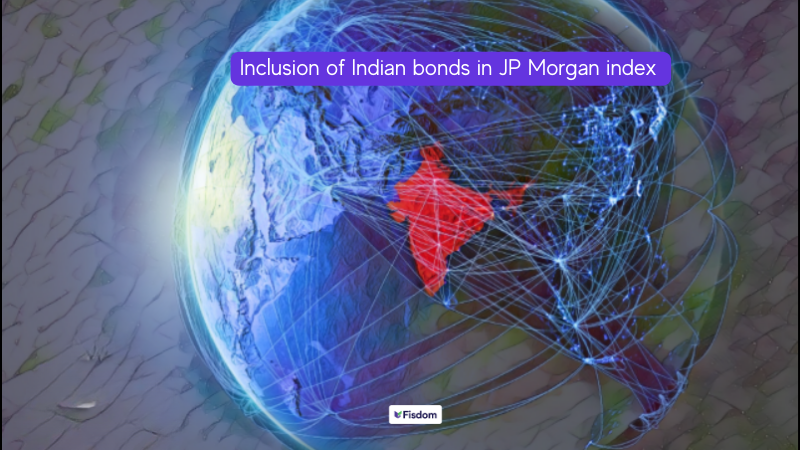
Recently, global credit rating agency Fitch downgraded the US’ credit rating from AAA to AA+. This has given rise to concerns about the country’s financial health. This decision could have significant effects on the global markets, some of which we are already starting to see. Interestingly, in the midst of this development, India’s economic outlook received an upgrade from Morgan Stanley, showing positive signs of growth and resilience.
Read More – Impact of Indian Rupee Depreciation
Let’s delve into the implications of these events and whether they mark a shift in the global economic landscape, with India emerging as a rising powerhouse.
What does the Fitch credit downgrade report say?
As per Fitch ratings, the credit downgrade of US is due to “expected deterioration in the U.S. public finances and the absence of a credible fiscal consolidation plan.” There is also a high and growing general government debt burden that has been highlighted in the report. Fitch also pointed out that the erosion of governance over the last two decades has resulted in frequent debt limit standoffs and last-minute resolutions.
It is important to note that the US rating has just come down to ‘AA+’ from ‘AAA’ and the outlook is ‘stable’ so the creditworthiness of the US still remains strong.
What is a credit rating downgrade?
In simple terms, a credit rating downgrade implies receiving a lower grade on one’s financial scorecard. When companies or governments seek to borrow money, they are given ratings that indicate their likelihood to repay debts. If their rating gets downgraded, it means their financial situation has deteriorated, making them riskier for lenders.
Credit rating agencies evaluate the creditworthiness and default risk of companies and governments that borrow money. Based on their assessment, they assign ratings to reflect the level of risk. For Fitch Ratings, ‘AAA’ is the highest, representing the best creditworthiness, while ‘AA+’ indicates high-quality credit.
Why did Fitch Ratings downgrade the US credit rating?
Fitch Ratings, in its credit rating report for the US, enlisted these key rating drivers. Here’s a look:
- Erosion of governance: Fitch noted a steady decline in governance standards over the past 20 years, affecting fiscal management and confidence in the government’s ability to handle debt matters.
- Rising general government deficits: Fitch predicts that the general government deficit will rise to 6.3% of GDP in 2023, reflecting weaker federal revenues, new spending initiatives, and higher interest costs.
- General government debt to rise: Despite improvements since the pandemic peak, the debt-to-GDP ratio remains high at 112.9% in 2023 and is projected to reach 118.4% by 2025, making the US vulnerable to economic shocks.
- Unaddressed medium-term fiscal challenges: Challenges related to higher interest rates, rising debt stock, and healthcare costs remain unaddressed.
- US economy likely to slip into recession: Fitch projects a mild recession in 4Q23 and 1Q24 due to tightening credit conditions and weakening business investment.
- Fed tightening: Fitch expects the Federal Reserve to raise interest rates further to combat inflation, complicating the goal of economic stability.
When US economy sneezes, world economies catch cold
“When America sneezes, the world catches a cold” is a common saying that illustrates the significant impact the United States’ economic performance has on other economies across the world.
While the US stock markets ignored the downgrade, the Indian stock markets tanked over 1% on 2nd August 2023, as investors turned cautious following the downgrade. There were also continued outflows seen from foreign portfolio investors.
How did BSE and NSE react?
The BSE Sensex shed 676.53 points or 1.02%, to close at 65,782.78. The 30-share index fell by 1,028 points during intraday trades. The broader Nifty ended at 19,526.55, down 207 points, or 1.05 per cent.
India’s rating upgrade by Morgan Stanley
While the USA grapples with its downgrade, the Indian economy is shining bright. Morgan Stanley, a leading global financial services firm, upgraded India’s rating to ‘overweight’ from ‘equal-weight’, citing less extreme valuations.
Let’s take a closer look at the key points in the Morgan Stanley report:
- The upgrade is due to “improved growth outlook and attractive valuations” in the Indian market.
- India’s fiscal deficit is expected to be at 6.8% of GDP in 2023, lower than previously estimated.
- The Indian rupee is showing signs of stability, buoyed by strong foreign direct investment (FDI) flows.
- The upgrade by Morgan Stanley is a testament to India’s resilient economy. It is expected to boost investor confidence and attract more foreign investments into the country.
Morgan Stanley’s upgrade for India’s economic status indicates increased confidence in India’s growth prospects and market performance. The upgrade comes as a result of India’s less extreme valuations, making it an attractive investment destination compared to other countries. In contrast, Morgan Stanley downgraded China’s economic status to “equal-weight,” suggesting a reduced interest in Chinese investments due to various factors. India’s economic resilience and structural reforms have positioned it as an attractive investment option for international investors.
The upgraded outlook signals positive sentiment towards India’s economic policies and growth potential, attracting more capital inflows into the country.
Conclusion
The downgrade of the U.S.’s credit rating by Fitch and the upgrade of India’s rating by Morgan Stanley highlight the shifting dynamics in the global economy. While the downgrade raises serious questions about the health of the U.S. economy, the upgrade puts India in a favorable light, signaling a promising future for the country’s economy.
As investors, it’s crucial to understand these global shifts and adjust our investment strategies accordingly. With the current situation, it seems that emerging markets like India might be the next big thing for global investors.



























